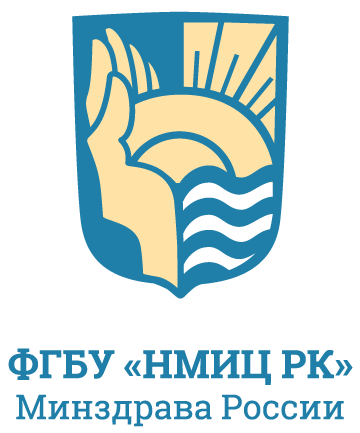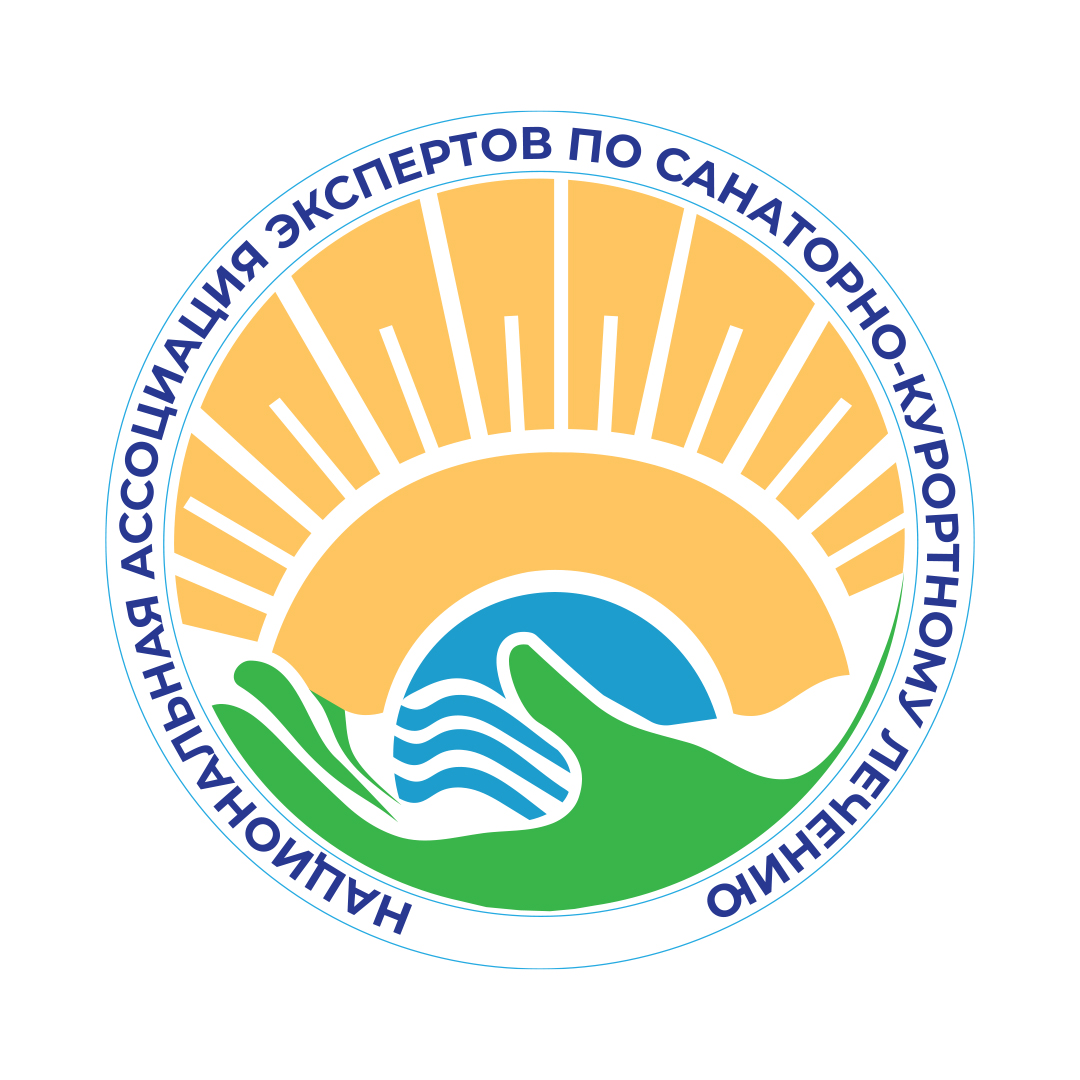Выпуск 5-21, 2022
Модель эффективности реабилитационных программ: ретроспективное сравнительное исследование пациентов с постковидным синдромом
1 ![]() Гришечкина И.А., 1
Гришечкина И.А., 1 ![]() Лобанов А.А.,1
Лобанов А.А.,1 ![]() Андронов С.В.,1
Андронов С.В.,1 ![]() Попов А.И.,1
Попов А.И.,1 ![]() Никитин М.В.,2
Никитин М.В.,2 ![]() Терентьева М.В.
Терентьева М.В.
1 Национальный медицинский исследовательский центр реабилитации и курортологии, Москва, Россия
2Московский государственный медико-стоматологический университет им. А.И. Евдокимова, Москва, Россия
РЕЗЮМЕ
ЦЕЛЬ. Оценить ожидаемую эффективность стратегий реабилитации постковидного синдрома.
МАТЕРИАЛ И МЕТОДЫ. Исследование проводилось в период с августа 2021 года по март 2022 года, на базе Региональных (Краснодарский край (n=25), Республика Бурятия (n=25), и Федерального реабилитационных Центров (г. Москва) (n=25). Данные получены путем ретроспективного анализа историй болезни и опроса участников исследования, которые имели показания или проходили лечение в реабилитационном центре в связи с постковидным синдромом (U 09.9). Средняя продолжительность времени после начала острого периода заболевания составила 6,5± 2,5 месяцев. Степень выраженности одышки оценивалась по шкале Борга. Была построена прогностическая модель, оценивающая ожидаемую эффективность реабилитационной программы по уменьшению выраженности одышки. Для построения модели использовалась методика нелинейной логит-регрессии методом максимального правдоподобия.
РЕЗУЛЬТАТЫ И ОБСУЖДЕНИЕ. Согласно, представленной модели наилучшая ожидаемая эффективность реабилитации выявлена в ФГБУ «Национальный медицинский исследовательский центр реабилитации и курортологии» Минздрава России (г. Москва) (β=-1,788685, p=0,009964604), несколько меньшая ожидаемая эффективность реабилитации наблюдалась в условиях курорта, обладающего лечебным климатом (Архипо-Осиповка, Краснодарский край) (β=0,9913501, p=0,182944), наименьшая ожидаемая эффективность зарегистрирована в региональном реабилитационном центре (республика Бурятия) (β=1,054594 p=0,2642723). На необходимость комплексного подхода в лечении больных с постковидным синдромом указывали работы многие отечественные и зарубежные исследователи, однако выбор и содержание стратегий лечения дискутабелен. Наше исследование даёт предварительный ответ на данный вопрос.
ЗАКЛЮЧЕНИЕ. Разработанная модель ожидаемой эффективности реабилитации пациентов с постковидным синдромом обладает специфичностью – 54,54%, чувствительностью – 91,3%, общей точностью – 84,21%. Наилучшая ожидаемая эффективность реабилитации выявлена в Национальном медицинском исследовательском центре реабилитации и курортологии Минздрава России (г. Москва) (β=-1,788685, p=0,009964604), несколько меньшая в условиях курорта, обладающего лечебным климатом (Краснодарский край) (β=0,9913501, p=0,182944), наименьшая ожидаемая эффективность зарегистрирована в региональном реабилитационном центре (Республика Бурятия) (β=1,054594 p=0,2642723).
КЛЮЧЕВЫЕ СЛОВА: постковидный синдром, реабилитация, реабилитационные программы, стратегии лечения, одышка
КОНФЛИКТ ИНТЕРЕСОВ: Авторы декларируют отсутствие явных и потенциальных конфликтов интересов, связанных с публикацией настоящей статьи.
ДЛЯ ЦИТИРОВАНИЯ: Grishechkina I.A., Lobanov A.A., Andronov S.V., Popov A.I., Nikitin M.V., Terentiyeva M.V. Rehabilitation Programs Effectiveness Model: a Retrospective Comparative Study of Patients with Post-Acute COVID-19 Syndrome. Bulletin of Rehabilitation Medicine. 2022; 21 (5): 20-26. https://doi.org/10.38025/2078-1962-2022-21-5-20-26
Список литературы:
1. Gilmutdinova I.R., Kolyshenkov V.A., Lapickaya K.A., Trepova A.S., Vasileva V.A., Prosvirnin A.N., Marchenkova L.A., Terentev K.V., Yakovlev M.Y., Rachin A.P., Fesyun A.D., Reverchuk I.V. Telemedicine platform COVIDREHAB for remote rehabilitation of patients after COVID-19. European Journal of Translational Myology. 2021; 31(2): 9783 p. https://doi.org/10.4081/ejtm.2021.9783
2. Ambrazhuk I.I., Fesyun A.D. The main aspects of the development of medical rehabilitation. Russian Journal of Rehabilitation Medicine. 2018; (4): 31-36.
3. Ansokova M.A., Vasil’eva V.A. Rehabilitation of a patient with acute cerebral circulation disturbance due to COVID-19. In the book: Features of the course and diagnosis of a new coronavirus infection COVID-19. Materials of the Russian scientific-practical conference with international participation. Kursk. 2022: 44-45.
4. Marchenkova L.A., Makarova E.V., Yurova O.V. Role of micronutrients in comprehensive rehabilitation of patients with new coronavirus infection COVID-19. Voprosy pitaniia [Problems of Nutrition]. 2021; 90(2): 40-49. https://doi.org/10.33029/0042-8833-2021-90-2-40-49
5. Fesyun A.D., Lobanov A.A., Rachin A.P., Yakovlev M.Yu., Andronov S.V., Konchugova T.V. et al. Challenges and approaches to the medical rehabilitation of patients survived complications of COVID-19. Bulletin оf Rehabilitation Medicine. 2020; 3(97): 3-13. https://doi.org/10.38025/2078-1962-2020-97-3-3-13
6. Vyalkov A.I., Bobrovnitsky I.P., Rakhmanin Yu.A., Razumov A.N. Ways to improve health organization in conditions of growing environmental challenges to life safety and population health. Russian Journal of Rehabilitation Medicine. 2017; (1): 24-41.
7. Cenko E., Badimon L., Bugiardni R., Claeys M.J., De Luca G., De Wit C. et al. Cardiovascular disease and COVID-19: a consensus paper from the ESC Working Group on Coronary Pathophysiology & Microcirculation, ESC Working Group on Thrombosis and the Association for Acute CardioVascular Care (ACVC), in collaboration with the European Heart Rhythm Association (EHRA). Cardiovascular Research. 2021; 117(14): 2705-2729. https://doi.org/10.1093/cvr/cvab298
8. Bell M., Catalfamo C.J., Farland L.V., Ernst K.C., Jacobs E.T., Klimentidis Y.C. et al. Post-acute sequelae of COVID-19 in a non-hospitalized cohort: Results from the Arizona CoVHORT. Public Library of Science. ONE. 2021; 16(8): e0254347. https://doi.org/10.1371/journal.pone.0254347
9. Huang C., Huang L., Wang Y., Li X., Ren L., Gu X. et al. 6-month consequences of COVID-19 in patients discharged from hospital: a cohort study. The Lancet. 2021; 397(10270): 220-232. https://doi.org/10.1016/S0140-6736(20)32656-8
10. Arnold D.T., Hamilton F.W., Milne A., Morley A.J., Viner J., Attwood M. et al. Patient outcomes after hospitalisation with COVID-19 and implications for follow-up: results from a prospective UK cohort. Thorax. 2021; 76(4): 399-401. https://doi.org/10.1136/thoraxjnl-2020-216086
11. Cau R., Faa G., Nardi V., Balestrieri A., Puig J., Suri J.S., San Filippo R., Saba L. Long-COVID diagnosis: From diagnostic to advanced AI-driven models. European Journal of Radiology. 2022; (148): 110164. https://doi.org/10.1016/j.ejrad.2022.110164
12. Montani D., Savale L., Noel N., Meyrignac O., Colle R., Gasnieret M. et al. Post-acute COVID-19 syndrome. European Respiratory Review. 2022; (31): 210185. https://doi.org/10.1183/16000617.0185-2021
13. Hodgson C.L., Higgins A.M., Bailey M.J., Mather A.M., Beach L., Bellomo R., Bissett B., Boden I.J., Bradley S., Burrell A., Cooper D.J. et al. & The COVIDRecovery Study Investigators and the ANZICS Clinical Trials Group. The impact of COVID-19 critical illness on new disability, functional outcomes and return to work at 6 months: a prospective cohort study. Critical Care. 2021; (25): 382 p. https://doi.org/10.1186/s13054-021-03794-0
14. Di Caudo C.G., Rivas G.M., Fernández-Rodríguez I., Gómez-Jurado G., Garrido M.R., Membrilla-Mesa M. Tratamiento rehabilitador de la infección por COVID: caracterización y seguimiento de pacientes hospitalizados en Granada, Espana. Rehabilitación. 2021 ; 4(56) : 328-336. https://doi.org/10.1016/j.rh.2021.09.001
15. Capin J.J., Wilson M.P., Hare K., Vempati S., Little C.E., McGregor D., Castillo‑Mancilla J., Stevens‑Lapsley J.E., Jolley SE., Erlandson K.M. Prospective telehealth analysis of functional performance, frailty, quality of life, and mental health after COVID-19 hospitalization. BioMed Central. Geriatrics. 2022; (22): 251 p. https://doi.org/10.1186/s12877-022-02854-6
16. Ghosn J., Piroth L., Epaulard O., Le Turnier P., Mentré F., Bachelet D., Laouénan C., the French COVID cohort study and investigators groups. Persistent COVID-19 symptoms are highly prevalent 6 months after hospitalization: results from a large prospective cohort. Clinical Microbiology and Infection. 2021; 27(7): 1041.e1-1041.e4. https://doi.org/10.1016/j.cmi.2021.03.012
17. Wu X., Liu X., Zhou Y., Yu H., Li R., Zhanet Q. et al. 3-month, 6-month, 9-month, and 12-month respiratory outcomes in patients following COVID-19- related hospitalisation: a prospective study. The Lancet. Respiratory Medicine. 2021; (9): 747-754. https://doi.org/10.1016/S2213-2600(21)00174-0
18. Belevskij A.S., Meshcheryakova N.N. Pulmonary rehabilitation. Moscow. Atmosphera. 2018: 76 p.
19. Fugazzaro S., Contri A., Esseroukh O., Kaleci S., Croci S., Massari M. et al. Rehabilitation Interventions for Post-Acute COVID-19 Syndrome: A Systematic Review. International Journal of Environmental Research and Public Health. 2022; (19): 5185 p. https://doi.org/10.3390/ijerph19095185
20. Faverio P., Luppi F., Rebora P., D’Andrea G., Stainer A., Busnelli S., Catalano M. et al. One-year pulmonary impairment after severe COVID-19: a prospective, multicenter follow-up study. Respiratory Research. 2022; (23): 65 p. https://doi.org/10.1186/s12931-022-01994-y
21. Bungenberg J., Humkamp K., Hohenfeld Ch., Rust I.M., Ermis U., Dreher M. et al. Long COVID-19: Objectifying most self-reported neurological symptoms. Annals of Clinical and Translational Neurology. 2022; 9(2): 141-154 https://doi.org/10.1002/acn3.51496
22. Schaeffer M.R., Cowan J., Milne K.M., Puyat J.H., Voduc N., Corrales-Medina V. et al. Cardiorespiratory physiology, exertional symptoms, and psychological burden in post-COVID-19 fatigue. Respiratory Physiology & Neurobiology. 2022; (302): 103898 p. https://doi.org/10.1016/j.resp.2022.103898
23. Martínez-Salazar B., Holwerda M., Stüdle C., Piragyte I., Mercader N., Engelhardt B., Rieben R., Döring Y. COVID-19 and the Vasculature: Current Aspects and Long-Term Consequences. Frontiers in Cell and Developmental Biology. 2022; (10): 824851. https://doi.org/10.3389/fcell.2022.824851
24. Gloeck R., Buhr-Schinner H., Koczulla A., Schipmann R., Schultz K., Spielmanns M. et al. DGP-Empfehlungen zur pneumologischen Rehabilitation bei COVID-19. Pneumologie. 2021; 57(2): 189-98.
25. Puchner B., Sahanic S., Kirchmair R., Pizzini A., Sonnweber B., Wöll E. et al. Beneficial effects of multi-disciplinary rehabilitation in Post-acute COVID-19: an observational cohort study. European Journal of Physical and Rehabilitation Medicine. 2021; 57(2): 189-198. https://doi.org/10.23736/S1973-9087.21.06549-7
26. Rutsch M., Frommhold J., Buhr-Schinner H., Djeiranachvili L., Gross Th., Schüller Per O., Katalinic A., Deck R. Study protocol medical rehabilitation after COVID-19 disease: an observational study with a comparison group with obstructive airway disease / Re_Co. BioMed Central Health Services Research. 2021; (21): 373. https://doi.org/10.1186/s12913-021-06378-4
27. Cattadori G., Di Marco S., Baravelli M., Picozzi A., Ambrosio G. Exercise Training in Post-COVID-19 Patients: The Need for a Multifactorial Protocol for a Multifactorial Pathophysiology. Journal of Clinical Medicine. 2022; 11(8): 2228. https://doi.org/10.3390/jcm11082228
28. Fumagalli C., Zocchi Ch., Tassetti L., Silverii M.V., Amato C., Livi L., et al. AOU Careggi COVID-19 Follow-up study Group. Factors associated with persistence of symptoms 1 year after COVID-19: A longitudinal, prospective phone-based interview follow-up cohort study. European Journal of Internal Medicine. 2022; (97): 36-41. https://doi.org/10.1016/j.ejim.2021.11.018
29. Harvey-Dunstan Th.C., Jenkins A.R., Gupta A., Hall I.P. and Bolton Ch.E. Patient-related outcomes in patients referred to a respiratory clinic with persisting symptoms following non-hospitalised COVID-19. Chronic Respiratory Disease. 2022; (19): 1-4. https://doi.org/10.1177/14799731211069391
30. Razumov A.N., Starodubov V.I., Ponomarenko G.N. Sanatorium and resort: national leadership. Мoscow. GEOTAR-Media. 2021: 752 p.
31. Rebrova O.Yu. Statistical analysis of medical data. Application of the application package Statistica. Moscow. Media-Sphere. 2002: 312 p.
32. Bogolyubov V.M. Physiotherapy and balneology. Мoscow. BINOM. 2021: 999p.
33. Understanding of guidance for acupuncture and moxibustion interventions on COVID-19 (Second edition) issued by CAAM. World Journal of Acupuncture – Moxibustion. 2020; 30(1): 1-4. https://doi.org/10.1016/j.wjam.2020.03.005
34. Cen' Yu., Lun Yu. Deep breathing Qigong against diseases. A Modern Guide to Ancient Healing Techniques. Мoscow. Eksmo. 2018: 304p.
35. Meshcheryakova N.N., Belevskij A.S., Kuleshov A.V. Guidelines pulmonary rehabilitation in patients with new coronavirus infection (COVID-19) community-acquired bilateral pneumonia. Moscow. Russia. 2020: 22 p.
36. Lobanov A.A., Grishechkina I.A., Fesyun A.D., Rachin A.P., Yakovlev M.Yu., Andronov S.V., Barashkov G.N., Lebedeva O.D., Popov A.I., Styazhkina E.M., Ansokova M.A., Vasil’eva V.A. Investigation of the Effectiveness and Safety of a Rehabilitation Program for Patients with Long Covid Using Aquatic Training. Bulletin of Rehabilitation Medicine. 2022; 21(3): 45-57. https://doi.org/10.38025/2078-1962-2022-21-3-45-57
37. Delafontaine A., Ditcharlea S., Hussein T., Hoffschir M., Plantefève G., Michon D. Physiotherapy and COVID-19: A major public health role to short, medium and long terms in the patient's rehabilitation process. Kinésithérapie, la Revue. 2020; 20(223): 11-18. https://doi.org/10.1016/j.kine.2020.05.005
38. Frota A.X., Carvalho V.M., Santos S.C.C, da Silva S.P., da Silva S.G.M, de Souza N.S.M.F. et al. Review Article: Functional capacity and rehabilitation strategies in COVID-19 patients: current knowledge and challenges. Revista da Sociedade Brasileira de Medicina Tropical. 2021; (54): e07892020. https://doi.org/10.1590/0037-8682-0789-2020
39. Meshcheryakova N.N., Belevskij A.S., Kuleshov A. V. Pulmonary rehabilitation of patients with coronavirus infection COVID-19, clinical examples. PULMONOLOGIYA. 2020; 30(5): 712-722. https://doi.org/10.18093/0869-0189-2020-30-5-715-722
40. Mikhaleva K.A., Mikhalev V.S., Eremushkin M.A., Gilmutdinova I.R., Chesnikova E.I. Respiratory exercises for patients with COVID-associated pneumonia. In the book: Modern technologies and equipment for medical rehabilitation, spa treatment and sports medicine. collection of proceedings of the V International Scientific and Practical Congress VITA REHAB WEEK. 2021: 102-104.
41. Moskvin S.V., Agasarov L.G. Laser acupuncture: 35 years of successful application in Russia (narrative review). Journal of Lasers in Medical Sciences. 2020; 11(4): 381-389. https://doi.org/10.34172/jlms.2020.61
42. Bickton F.M., Chisati E., Rylance J., Morton B. An Improvised Pulmonary Telerehabilitation Program for Postacute COVID-19 Patients Would Be Feasible and Acceptable in a Low-Resource Setting. American Journal of Physical Medicine & Rehabilitation. 2021; 100(3): 209-212. https://doi.org/10.1097/PHM.0000000000001666
43. Bouteleux B., Henrot P., Ernst R., Grassion L., Raherison-Semjen Ch., Beaufils F., Zysman M., Delorme M. Respiratory rehabilitation for COVID-19 related persistent dyspnea: A one-year experience. Respiratory Medicine. 2021; (189): 106648. https://doi.org/10.1016/j.rmed.2021.106648
44. Bek L.M., Berentschot J.C., Hellemons M.E., Huijts S.M., Aerts J.G.J.V., van Bommel J. et al. and the CO-FLOW Collaboration Group CO-FLOW: COvid-19 Follow-up care paths and Long-term Outcomes Within the Dutch health care system: study protocol of a multicenter prospective cohort study following patients 2 years after hospital discharge. BioMed Central Health Services Research. 2021; (21): 847. https://doi.org/10.1186/s12913-021-06813-6

Контент доступен под лицензией Creative Commons Attribution 4.0 License.
©
Эта статья открытого доступа по лицензии CC BY 4.0. Издательство: ФГБУ «НМИЦ РК» Минздрава России.




